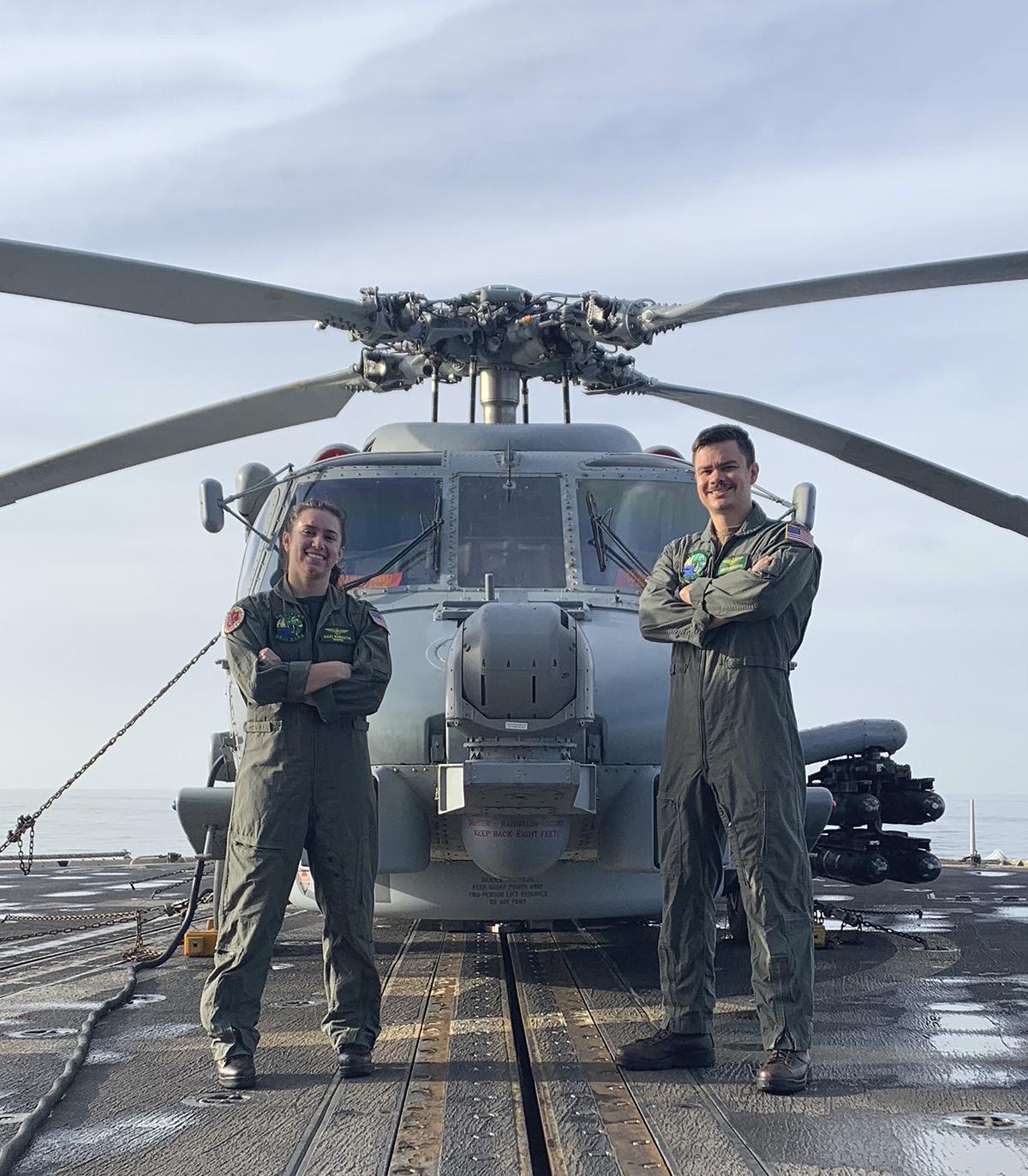Focus - UAVs and You The UAV Virtuoso
By LT Thomas "Cosmo" Sandford, USN NHA’s Air Vehicle Operator of the year, LT Cassie Gettinger, shares her operational experiences flying the MQ-8B Fire Scout Unmanned Aerial Vehicle at Helicopter Sea Combat Squadron 22 with Rotor Review
A
s a MQ-8B Fire Scout Air Vehicle Operator (AVO) and MH-60S pilot assigned to the first ever operational East Coast deployment of the Fire Scout, LT Cassie Gettinger played an integral role in proving the Fire Scout’s usefulness in drug interdiction operations while deployed to the Caribbean aboard the USS Detroit (LCS 7), and later aboard the USS Sioux City (LCS 11). In recognition of these accomplishments, NHA named her the Air Vehicle Operator of the Year. We caught up with her to ask her some burning questions about flying and deploying with the Fire Scout during her time in HSC-22. Rotor Review: How do you feel about being named the NHA AVO Operator of the Year? Gettinger: Shocked and flattered! I didn’t even know that was an achievement I could earn. Obviously, I’m very flattered about it. Rotor Review: What separates an average Air Vehicle Operator from a superior one? Gettinger: Putting in the time and effort to be proficient with the MQ-8. It’s an extra challenge being dual qualified or triple qualified as squadrons transition from MQ-8B to MQ8C because you’re studying multiple sets of systems (along with Limits and EPs), and executing multiple NATOPS evaluations, in an effort to fly two separate aircraft operated in two totally different manners. The superior AVOs are going to be the ones able to balance the career progression focus of flying the 60 (which is definitely important) while still giving the Fire Scout studying it deserves to be skillful. I think our squadron sets a really good example of taking this balance seriously. It started with our former COs, CDRs Matt Persiani and Matt Wright, and continues with our current CO, CDR Tim Drosinos, who came in saying, “We’re going to do this, and we’re going to give it 110%.” We take it just as seriously as the MH-60S operations we conduct. Rotor Review: What are some of the benefits the Fire Scout has over the MH-60S? Gettinger: I think UAVs are definitely useful. One of the biggest advantages of the Fire Scout is that it is quieter because it is smaller, which allows you to get closer to things you’d like to investigate without being detected. It is also capable of carrying radar for surface contacts, which is something we don’t have on the MH-60S. One of the other benefits is that the Fire Scout can stream live ISR coverage to CIC aboard the ship, where the Ship’s CO, the TAO, and everyone else can be in the room with you and can see what you’re seeing.
Rotor Review #153 Summer '21
LT Cassie Gettinger stands next to one of HSC-22's MQ8B Fire Scout Unmanned Aerial System in the squadron's hangar. Photo Credit: HSC-22
With our LCS detachments we only have one 60 on board, so having extra eyes in the air to scan the ocean was helpful during our counter-drug deployments. For example, one of our sensor operators, AWS1 Ken Morris, spotted a single bail of cocaine floating out in the ocean, and the Fire Scout was able to loiter and keep eyes on it until we launched the MH60S to investigate it. It turns out it was empty though! Rotor Review: Is it hard to put in the same effort to studying and flying the Fire Scout as you do flying the MH-60S? Why or why not? Gettinger: Our careers as helicopter pilots put an emphasis on the MH-60S manned helicopter we fly—at the end of the day, we were selected as MH-60S pilots first. If you don’t get a qualification in the Fire Scout, it tends to not be a big deal, but if you fail to get Level III, Functional Check Pilot, or HAC in the MH-60S, that’s going to hurt your career. As we talked about earlier, it can be challenging because you have to balance all these qualifications. But, that should never take away from being proficient in the Fire Scout because it’s still a full size helicopter—not some camera drone—that can kill people like any other aircraft if mistakes are made. Rotor Review: How did you employ the Fire Scout when you were on deployment in the Caribbean? Gettinger: I’ve been on two Fire Scout deployments, and both were tasked with drug interdiction. One of those deployments was the first-ever Airborne Use of Force and Fire Scout operational deployment on the East Coast. That 40









































